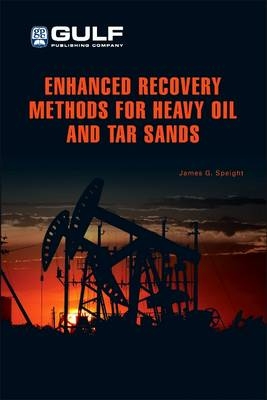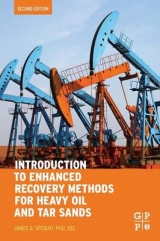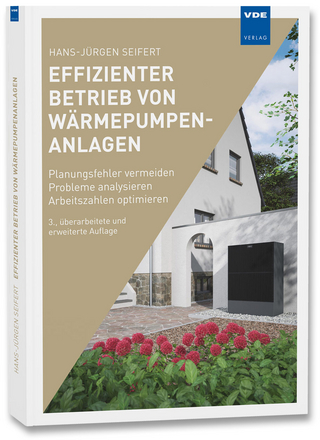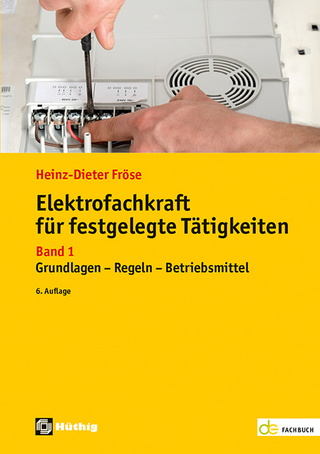
Enhanced Recovery Methods for Heavy Oil and Tar Sands
Gulf Publishing Company (Verlag)
978-1-933762-25-8 (ISBN)
- Titel erscheint in neuer Auflage
- Artikel merken
Recent oil price fluctuations continue to stress the need for more efficient recovery of heavy oil and tar sand bitumen resources. With conventional production steadily declining, advances in enhanced recovery will be required so that oil production can be extended and reservoirs last longer. A practical guide on heavy-oil related recovery methods is essential for all involved in heavy oil production. To feed this demand, James Speight, a well-respected scientist and author, provides a must-read for all scientists, engineers and technologists that are involved in production enhancement. In Enhanced Recovery Methods for Heavy Oil and Tar Sands, Speight provides the current methods of recovery for heavy oil and tar sand bitumen technology, broken down by thermal and non-thermal methods. An engineer, graduate student or professional working with heavy oil, upcoming and current, will greatly benefit from this much-needed text.
Dr. Speight is currently editor of the journal Petroleum Science and Technology (formerly Fuel Science and Technology International) and editor of the journal EnergySources. He is recognized as a world leader in the areas of fuels characterization and development. Dr. Speight is also Adjunct Professor of Chemical and Fuels Engineering at the University of Utah.James Speight is also a Consultant, Author and Lecturer on energy and environmental issues. He has a B.Sc. degree in Chemistry and a Ph.D. in Organic Chemistry, both from University of Manchester. James has worked for various corporations and research facilities including Exxon, Alberta Research Council and the University of Manchester. With more than 45 years of experience, he has authored more than 400 publications--including over 50 books--reports and presentations, taught more than 70 courses, and is the Editor on many journals including the Founding Editor of Petroleum Science and Technology.
List of Figures
List of Tables
Preface
Chapter 1 Definitions
1.1 History
1.2 Petroleum
1.3 Heavy Oil
1.4 Tar Sand Bitumen
1.5 Validity of the Definitions
1.6 Conclusions
1.7 References
Chapter 2 Origin and Occurrence
2.1 Origin of Petroleum and Heavy Oil
2.1.1 Abiogenic Origin
2.1.2 Biogenic Origin
2.1.3 Occurrence and Distribution
2.2 Reservoirs
2.3 Reserves
2.3.1 Definitions
2.3.2 The Real Numbers
2.4 Production
2.5 Oil Pricing
2.5.1 Oil Price History
2.5.2 Pricing Strategies
2.5.3 The Role of Heavy Oil in the Future
2.6 References
Chapter 3 Reservoirs and Reservoir Fluids
3.1 Reservoirs
3.1.1 Structural Traps
3.1.2 Heterogeneity
3.2 Classes of Fluids
3.3 Evaluation of Reservoir Fluids
3.3.1 Sampling Methods
3.3.2 Data Acquisition and QA/QC
3.4 Physical (Bulk) Composition and Molecular Weight
3.4.1 Sampling
3.4.2 Asphaltene Separation
3.4.3 Fractionation
3.4.4 Molecular Weight
3.5 Reservoir Evaluation
3.6 References
Chapter 4 Properties
4.1 Physical Properties
4.1.1 Sampling
4.1.2 Elemental (Ultimate) Analysis
4.1.3 Metals Content
4.1.4 Density and Specific Gravity
4.1.5 Viscosity
4.2 Thermal Properties
4.2.1 Carbon Residue
4.2.2 Specific Heat
4.2.3 Heat of Combustion
4.2.4 Volatility
4.2.5 Liquefaction and Solidification
4.2.6 Solubility
4.3 Metals Content
4.4 References
Chapter 5 Exploration and General Methods for Oil Recovery
5.1 Exploration
5.2 Primary Recovery (Natural) Methods
5.3 Secondary Recovery
5.4 Enhanced Oil Recovery
5.4.1 Thermal Recovery Methods
5.4.2 Gas Flood Recovery Methods
5.4.3 Chemical Flood Recovery Methods
5.5 References
Chapter 6 Nonthermal Methods of Recovery
6.1 Primary Recovery (Natural) Methods
6.2 Secondary Recovery Methods
6.2.1 Waterflooding
6.2.2 Gas Injection
6.2.3 Cold Production
6.2.4 Pressure Pulse Technology
6.2.5 Solvent Processes
6.3 Enhanced Oil Recovery Methods
6.3.1 Alkaline Flooding
6.3.2 Carbon Dioxide Flooding
6.3.3 Cyclic Carbon Dioxide Stimulation
6.3.4 Nitrogen Flooding
6.3.5 Polymer Flooding
6.3.6 Micellar Polymer Flooding
6.3.7 Microbial Enhanced Oil Recovery
6.4 Oil Mining
6.5 References
Chapter 7 Thermal Methods of Recovery
7.1 Hot-Fluid Injection
7.2 Steam-Based Methods
7.2.1 Steam Drive Injection (Steam Injection)
7.2.2 Cyclic Steam Injection
7.2.3 Steam Drive
7.3 In Situ Combustion Processes
7.3.1 Forward Combustion
7.3.2 Reverse Combustion
7.3.3 The THAI Process
7.4 Other Processes
7.4.1 Horizontal Well Technology
7.4.2 Inert Gas Technology
7.4.3 Steam-Assisted Gravity Drainage (SAGD)
7.4.4 Hybrid Processes
7.5 In Situ Upgrading
7.6 References
Chapter 8 Upgrading Heavy Oil
8.1 Surface Upgrading
8.1.1 Thermal Cracking Processes
8.1.2 Catalytic Cracking Processes
8.1.3 Hydrogen Addition Processes
8.1.4 Solvent Processes
8.2 In Situ Upgrading
8.2.1 Solvent-Based Processes
8.2.2 Bulk Thermal Processes
8.3 References
App A Conversion Factors
Glossary
Index
| Verlagsort | Austin |
|---|---|
| Sprache | englisch |
| Maße | 152 x 229 mm |
| Gewicht | 730 g |
| Themenwelt | Technik ► Elektrotechnik / Energietechnik |
| ISBN-10 | 1-933762-25-X / 193376225X |
| ISBN-13 | 978-1-933762-25-8 / 9781933762258 |
| Zustand | Neuware |
| Informationen gemäß Produktsicherheitsverordnung (GPSR) | |
| Haben Sie eine Frage zum Produkt? |
aus dem Bereich



